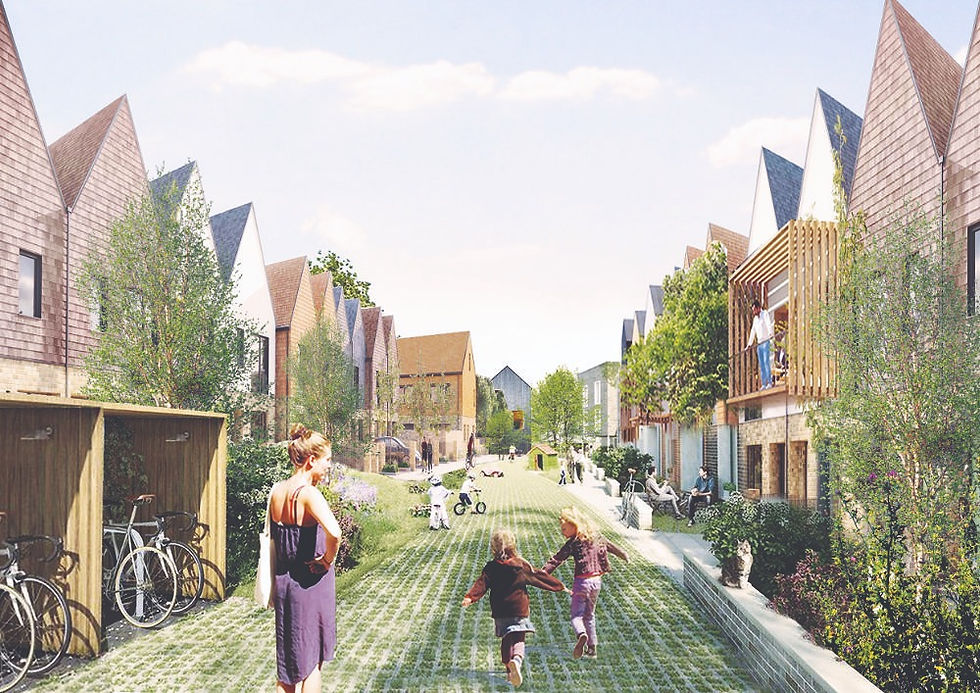AREA DEVELOPMENT
While the environment is squeaking and creaking, the Netherlands faces a gigantic housing shortage. It's no option to continue building the old way: we must start using area development as a catalyst for a broader transition, one that benefits the landscape, the environment and social cohesion. Within various partnerships Woonpioniers invents holistic strategies for the infill development, expansion and restructuring of cities, villages and farmyards.
GRASP
Footprint calculator for area development
EO Wijers
Finalists design competition development of vacant farmyards
Young Innovators
Renovation locations as seedbeds of the energy transition
Marker Wadden
2nd prize design competition island settlement
Due to a big housing shortage our national government proclaims: 'Let's build, build, build!'. But do we simply push on the old way, or is an ingenious approach conceivable? An approach that does not consume our landscape further but breathes new life into it? Building houses and shaping our living environment is a fantastic opportunity to tackle old stuck systems and social problems at their roots. And we must seize that opportunity. It is time for recovery, for transformation.
We believe this requires insight, ambition and connection. Insight into the multiple environmental impact of building and living, the ambition to balance that impact close to home as much as possible, and forging intelligent connections to achieve this.
1. Insight
It is essential that we provide deeper insight into the complex ecological impact of housing development: construction methods, use of material, energy use, what sharing certain facilities does, and even lifestyle variables (where do we get our food from? how do we travel?). So that all parties involved in a small or large-scale housing processes feel engaged to make healthy, long term decisions. To this end, Woonpioniers, in collaboration with other parties, develops strategies and design tools, such as GRASP.
By integrally measuring our impact and visualizing it clearly, we can together come up with new solutions to further reduce the ecological footprint of building and living. But our ambition goes further: we believe that all remaining impact can and should be balanced out close to home.
2. Ambition
3. Connection
In realizing the ambition to “balance out” the impact of building ánd living locally, we look beyond the fence of a certain development area, to the surrounding landscape and the people who live and work there. To make robust links together with them that lead to win-win situations in the field of energy transition, climate adaptation and the restoration of biodiversity. Investments that eventually pay for themselves. We have extensively investigated the possibilities for this in Panorama Lokaal (neighbourhood transformation) and EO Wijers (yard transformation).
"With the wonderful possibilities of today we can make the ecological footprint of building and living more tangible and involve governments, developers and residents in reducing and transforming it. When they, together with professionals, tweak the knobs in GRASP, they will see in real-time: hey, suppose we build bio based, and suppose the neighbourhood jointly generates energy, shares electric cars and collectively produces some of its food, then we halve our footprint! And that's just the beginning: GRASP also shows which ecological measures 'balance out' our residual impact locally, thereby revitalizing our landscape."
"When we invest in a vital ecological balance close to our homes, compensation becomes transformation. By reducing our footprint together and transforming it locally, we can breathe new life into our landscape at municipal and regional level and forge strong connections. It is important that we start using the one-off but also revolving capital that housing development generates for the future of our children."
“The old way of industrial farming is reaching its limits. Broadening, extending and new (direct) sales models are becoming more important. The addition of houses in the outskirts of the village or on agricultural yards that are becoming available can give a boost to this. Because GRASP translates the remaining ecological footprint of a particular development into landscape measures and the land area required for this, we can link these to new revenue models for farmers and to social goals. In this way we join forces and budgets in a new symbiosis between city and country.”
Yes, depending on your exact location and the size of your Indigo. For EU customers all structural elements are prefabricated in the Netherlands (our home base) and can be transported by road.
Call!
Woonpioniers challenges governments, developers and residents: who will join us in giving this vision wings? Within extension or expansion projects in village and city or on vacant agricultural yards. Please contact Daniel below.





%20_jpg13.jpg)
_edited.jpg)
